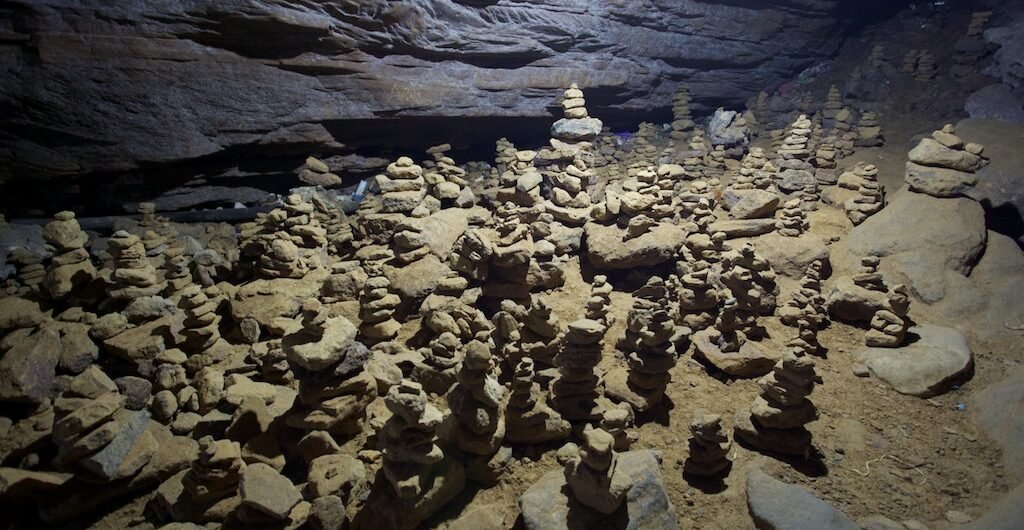Nestled in the heart of Pokhara, Nepal, the Gupteshwar Cave is a mesmerizing subterranean wonder that captivates visitors with its mystique and natural beauty. This sacred cave, hidden beneath the bustling cityscape, offers an intriguing glimpse into Nepal’s spiritual and geological heritage.
A Brief History of Gupteshwar Cave
Gupteshwar Cave, also known as Gupteshwor Mahadev Cave, has a rich history intertwined with local legends and religious significance. Discovered in the 16th century, the cave has been a pilgrimage site for centuries, attracting devotees of Lord Shiva. The name “Gupteshwar” translates to “hidden god,” aptly reflecting the cave’s concealed entrance and the revered Shiva Lingam housed within its depths. This natural shrine has been a focal point for worship and meditation, drawing both locals and tourists seeking spiritual solace and adventure.
How to Reach Gupteshwar Cave
Reaching Gupteshwar Cave is relatively straightforward, thanks to its proximity to Pokhara’s main attractions. The cave is located about 4 kilometers southwest of Lakeside, the popular tourist hub in Pokhara.
- By Taxi or Rickshaw: The easiest way to reach the cave is by hiring a taxi or rickshaw from Lakeside. The ride takes approximately 15 minutes and offers a scenic view of the city’s landscape.
- By Public Transport: Alternatively, you can take a local bus or minivan heading towards Chhorepatan. Inform the driver of your destination, and they will drop you near the cave entrance.
- By Foot or Bicycle: For those who enjoy a bit of exercise, walking or cycling from Lakeside is an excellent option. The route is well-marked, and the journey provides an immersive experience of Pokhara’s vibrant streets and natural beauty.
The Best Time to Visit Gupteshwar Cave
The best time to visit Gupteshwar Cave is during the dry seasons, from October to April. During these months, the weather is pleasant, and the cave is easily accessible. Monsoon season, from June to September, can make the cave slippery and difficult to navigate due to heavy rains and increased water flow inside the cave. Visiting during festivals such as Shivaratri can also provide a unique cultural experience, as the cave becomes a focal point for Hindu celebrations, filled with vibrant rituals and offerings.
What to Expect Inside the Cave
Upon entering Gupteshwar Cave, you will be greeted by a cool, damp atmosphere and the sound of dripping water echoing through the cavern. The cave stretches for about 3 kilometers, with the first section easily accessible to visitors. A series of steps lead down into the dimly lit interior, where you’ll encounter stunning stalactites and stalagmites that have formed over thousands of years. The highlight of the cave is the sacred Shiva Lingam, enshrined in a naturally formed chamber. This spiritual symbol attracts pilgrims and offers a serene spot for reflection and prayer.
Exploring further, you’ll reach a section of the cave that opens up to Davis Falls, a spectacular waterfall that disappears into the ground before re-emerging as an underground cascade. The juxtaposition of the cave’s dark, silent chambers with the roaring waterfall creates a surreal and unforgettable experience.
Tips for Visitors
- Wear Appropriate Footwear: The cave floor can be slippery, so sturdy, non-slip shoes are recommended.
- Bring a Flashlight: While the cave is partially lit, a flashlight can help you navigate darker sections and appreciate the intricate rock formations.
- Respect the Site: Remember that Gupteshwar Cave is a sacred site. Be respectful of the religious practices and avoid touching the Shiva Lingam or other holy objects.
Gupteshwar Cave in Pokhara is more than just a geological marvel; it’s a journey into the spiritual heart of Nepal, offering an enchanting blend of natural beauty and cultural depth. Whether you’re a history enthusiast, a spiritual seeker, or an adventurer at heart, this hidden gem is a must-visit on your Pokhara itinerary
Source credit Nepal Tourism —> https://ntb.gov.np/
